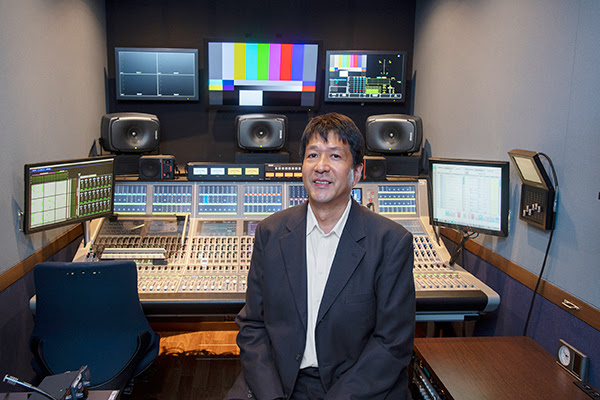
OSAKA, Japan—Japanese broadcaster Asahi Television Broadcasting Corp. (ABC) has outfitted its 202 outside broadcast (OB) truck for 5.1.4 immersive sound production, adding Genelec’s The Ones three-way coaxial monitors and GLM calibration software.
"Organizations like the Association of Radio Industries and Businesses are discussing standards for next-generation broadcasting, and three-dimensional audio is under consideration," said Sadanari Iwahashi of ABC’s production engineering department. "When we thought about a broadcasting van which could be used 15 years in the future, we concluded that it’s necessary to support immersive sound."
As part of ABC’s broader 5.1.4 immersive format initiation, it also has upgraded its MA (Multi Audio) room.
"When broadcasting starts to support immersive, we’ll be able to monitor the sound live from the site, and recordings can be brought into the immersive MA room for further processing," he said.
"It makes sense to have an OB unit ready to record immersive sound for many reasons. For example, when we record a concert, we can approve the use of the sound in other events and programs as well. It’s also important that we have four monitors installed in the ceiling from the start, so we can just begin immersive monitoring without the hassle of setting up."
Nihon Onkyo Engineering planned the acoustics, while Keisei Motors Ltd, a company with extensive experience in OB vans, manufactured the vehicle. The L-C-R channels are handled by three Genelec 8341 coaxial studio monitors.
Due to a custom-designed 7-foot-2.5-inch-high production room, ABC was able to mount four 8331 monitors in recesses in the ceiling. As the smallest model in The Ones series, the 8331 is well-suited to small rooms where space is limited. The unusually high ceiling meant the monitors could be placed at the same distance from the listening position as the L-C-R monitors in the front. A Genelec 7360 subwoofer handles low frequency duties.
"The goal was to ensure as much distance between the monitors as possible," said Iwahashi.
The professional video industry's #1 source for news, trends and product and tech information. Sign up below.
“One particular challenge was the position of the left and right rear 8331 monitors, which due to the structure, would be closer than the L, C and R monitors. The ideal angle for rear channel monitors is 110 degrees +/- 10 degrees, but if we positioned these and the L-C-R channels equidistant to the listener using that angle, they would exceed the width of the van. So, we compared the sound prioritizing the angle and then the distance many times, and in the end we decided to prioritise the angle. In order to maximize the distance, the rear monitors were also installed slightly above the horizontal position, at an elevated angle."
Smart Active Monitors like The Ones integrate closely with GLM software. The software enabled ABC to customize each monitor for frequency response, playback level and distance delay.
GLM created the perfect environment for accurate immersive monitoring – despite the acoustic demands of the space, said Iwahashi.
"We adjusted the angle of each monitor, fixed the reflections with sound absorption, calibrated them and then repeated the listening and fine-tuning process," he explained. "GLM software was a great help in building an ideal monitoring environment. The visualizations of frequency dip points were easy to understand too.
With Dolby Atmos now a household name and 3D soundbars commonplace throughout millions of homes, Iwahashi is confident that ABC was right to step up to immersive when it did.
"These developments support my initial feeling that an immersive system is an important and necessary feature for any OB van, and I’d like to continue to work harder in this format in the future as ABC creates more appealing programs in immersive."
For more information please visit www.genelec.com
Phil Kurz is a contributing editor to TV Tech. He has written about TV and video technology for more than 30 years and served as editor of three leading industry magazines. He earned a Bachelor of Journalism and a Master’s Degree in Journalism from the University of Missouri-Columbia School of Journalism.

